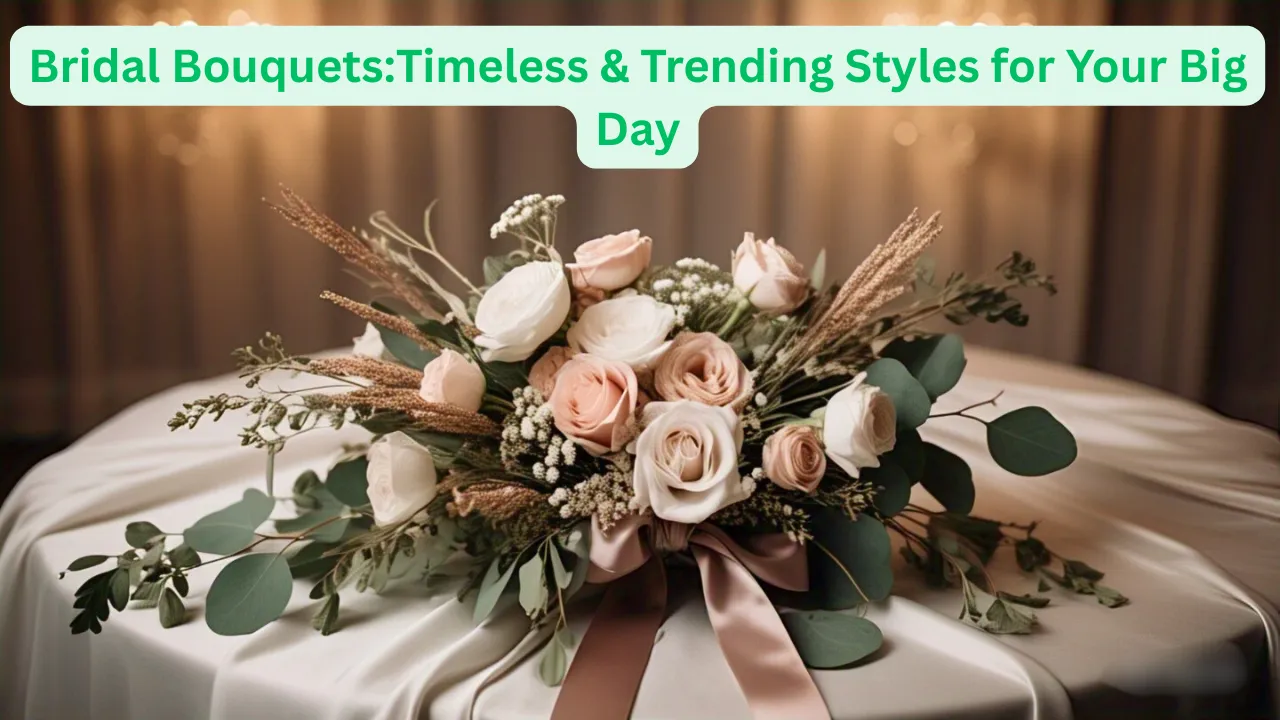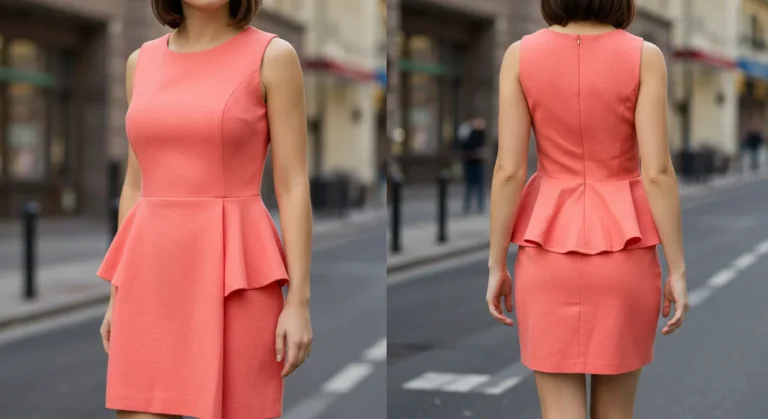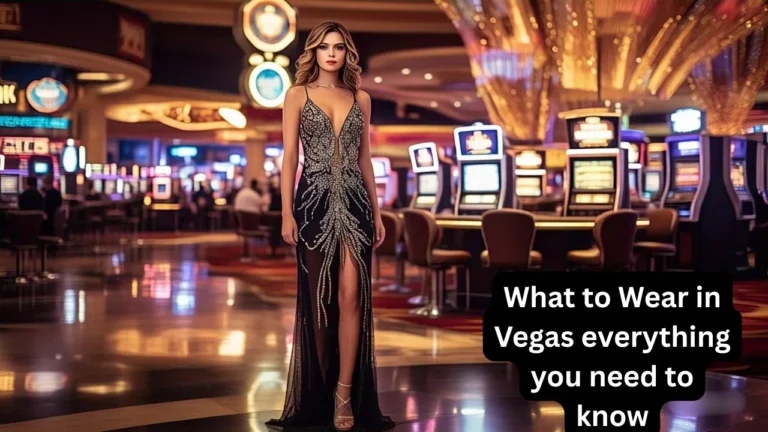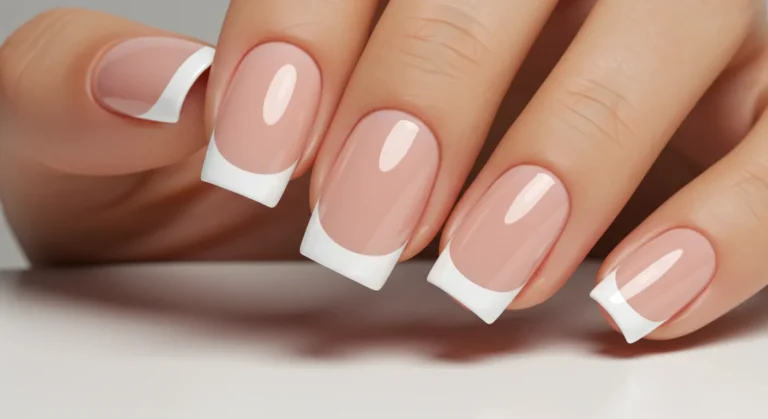Bridal Bouquets:Timeless & Trending Styles for Your Big Day
Introduction: Why the Bridal Bouquet Is More Than Just Flowers
ABridal Bouquets is more than a decorative piece—it’s the finishing touch to the bride’s ensemble and a poetic representation of love, hope, and new beginnings. It holds cultural, emotional, and visual significance, making it one of the most memorable elements of any wedding. Whether traditional or trendy, minimalist or extravagant, the Bridal Bouquets has the power to tell a story—your story.
As modern weddings Bridal Bouquets evolve into deeply personalized events, so does the importance of floral design. The right bridal bouquet complements the dress, the venue, the season, and even the couple’s journey. In this guide, we explore everything about Bridal Bouquets: from history and flower meanings to styles, seasonal picks, and expert tips to help brides find or create the Bridal Bouquets of their dreams.
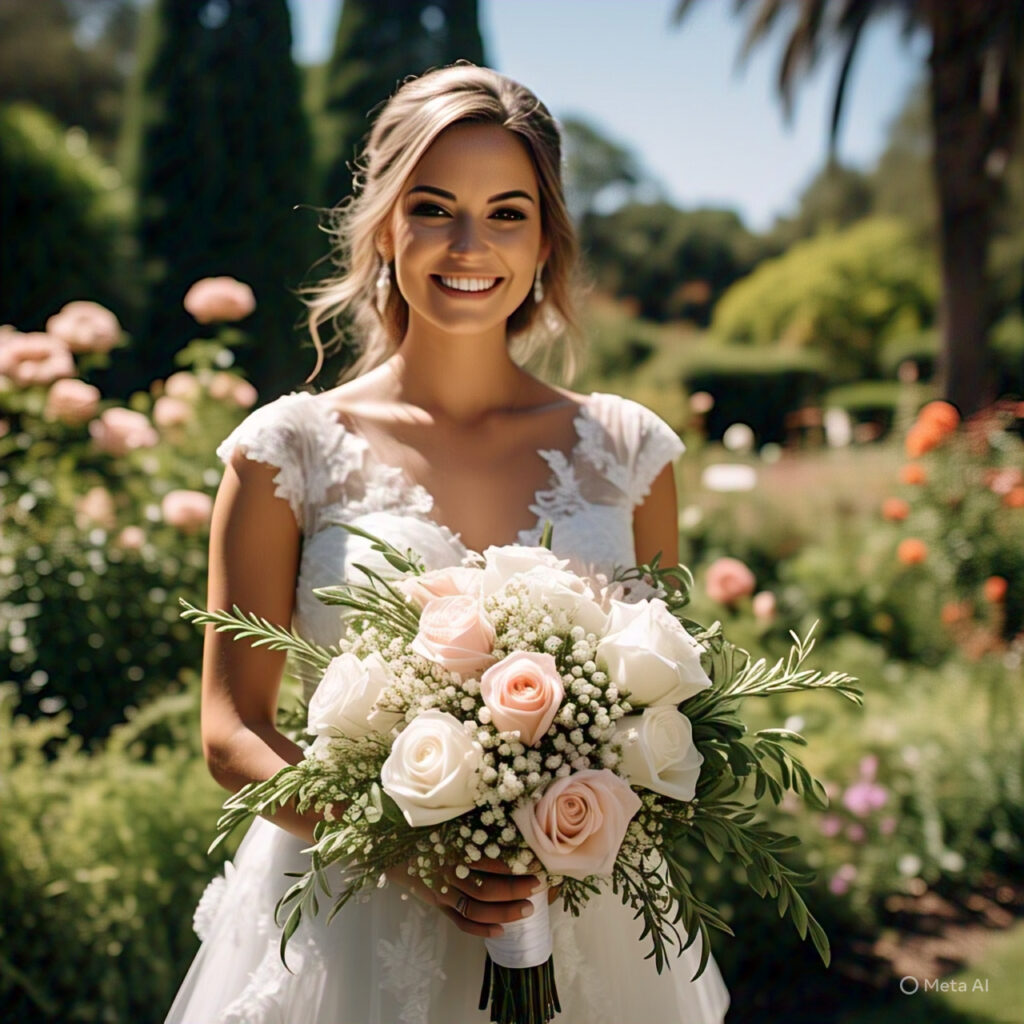
A Brief History and Symbolism of the Bridal Bouquet
The tradition of carrying a Bridal Bouquets dates back thousands of years. In ancient Greece and Rome, brides carried herbs like garlic and dill to ward off evil spirits. In the Middle Ages, fragrant flowers masked body odors due to lack of bathing. Over time, these practical reasons evolved into symbols of fertility, prosperity, and love.
During the Victorian era, flowers took on complex meanings through the “language of flowers” (floriography). Brides chose specific blooms not just for beauty, but for symbolism. For example:
- Roses = Love and passion
- Lilies = Purity and devotion
- Lavender = Serenity and grace
- Ivy = Fidelity
Today, the symbolism remains, but with added creative freedom. Brides use Bridal Bouquets as a canvas to share personal stories: flowers from a family garden, ribbons made from a late grandmother’s dress, or blooms representing places they’ve traveled with their partner.
Popular Types of Bridal Bouquets
Bridal bouquets come in a wide array of shapes and arrangements. Each type has its unique character, and the right one enhances your dress, silhouette, and wedding theme.
A. Round Bouquets
Classic and symmetrical, these tight arrangements often feature roses, peonies, or ranunculus. Perfect for formal weddings, they’re timeless and elegant.
B. Cascading Bouquets
Waterfall-style Bridal Bouquets with trailing vines and flowers like orchids or amaranthus. These dramatic pieces are ideal for glamorous or vintage weddings.
C. Hand-Tied Bouquets
Rustic and relaxed, these are loosely gathered blooms tied with ribbons or lace. Ideal for boho, outdoor, or garden weddings.
D. Posy Bouquets
Small, easy-to-hold Bridal Bouquets that are often minimalistic. Great for minimalist brides or bridesmaids.
E. Pageant/Presentation Bouquets
Long-stemmed flowers carried across the arm (like a beauty queen). Sophisticated and unique—often used with calla lilies or orchids.
F. Hoop and Crescent Bouquets
Modern and artistic, these creative shapes offer something unexpected for avant-garde brides who want to stand out.
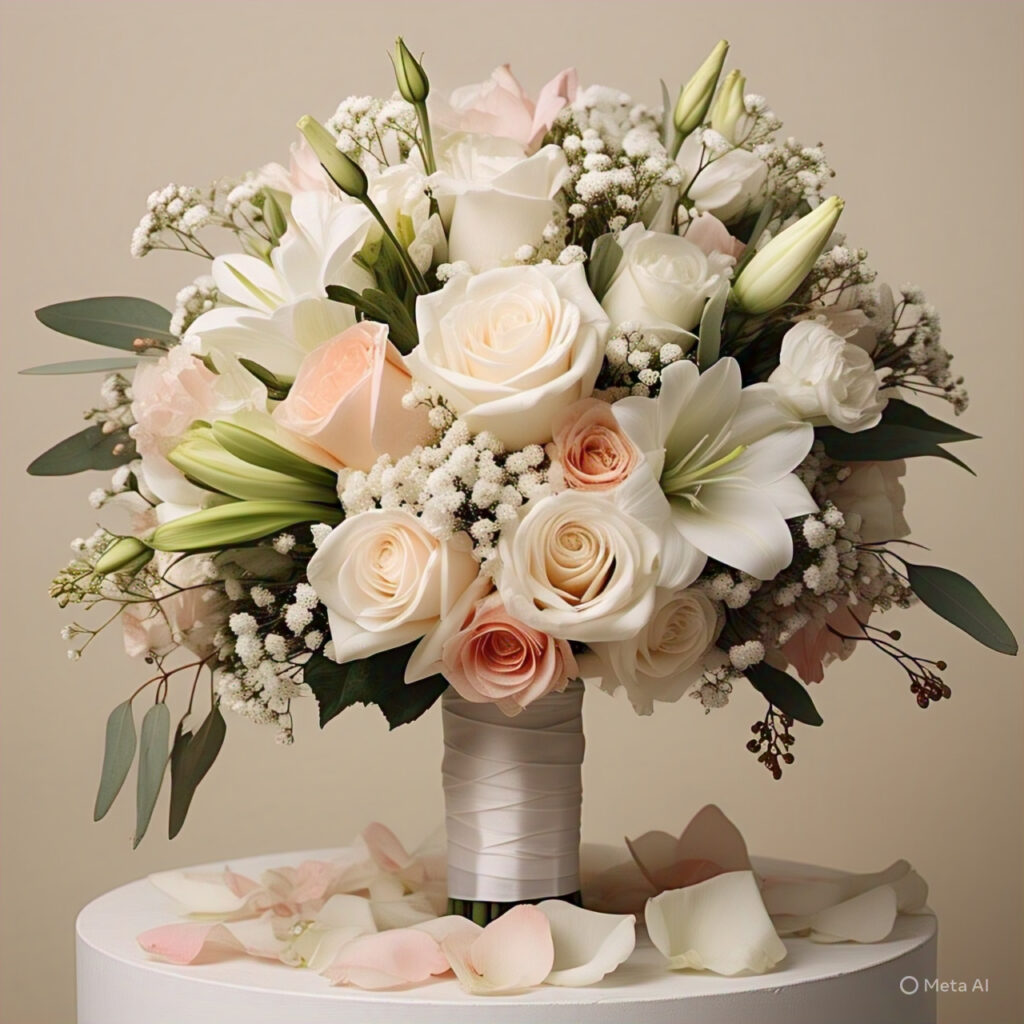
Best Flowers for Bridal Bouquets: Meaning & Style
Choosing flowers isn’t just about aesthetics—it’s also about emotion, texture, and symbolism. Here are some popular bridal flowers and Bridal Bouquets why brides love them:
- Peonies: Romantic, lush, and symbolic of prosperity.
- Roses: The ultimate symbol of love. Available in many colors and varieties.
- Hydrangeas: Full-bodied flowers that add volume and softness.
- Anemones: Bold and modern, with striking centers.
- Calla Lilies: Sleek, elegant, and minimal.
- Tulips: Delicate and spring-friendly.
- Baby’s Breath: Whimsical and budget-friendly.
- Succulents: Earthy, durable, and great for rustic weddings.
- Dahlias: Large, dramatic blooms that scream confidence.
Brides often mix these with greenery—like eucalyptus, ferns, or ruscus—for added texture and freshness.
Bridal Bouquet Trends by Season
Spring
Think: tulips, daffodils, cherry blossoms, and pastel tones. Spring bouquets often feel light, romantic, and whimsical.
Summer
Bright, vibrant, and full of movement. Peonies, sunflowers, zinnias, and roses dominate. Think coral, fuchsia, and butter yellow.
Fall
Rich hues like burgundy, rust, and burnt orange with flowers like dahlias, marigolds, and chrysanthemums. Add berries or wheat for texture.
Winter
Elegant whites, icy blues, and deep greens. Flowers include white roses, amaryllis, hellebores, and evergreens—often paired with pinecones or silver ribbon.
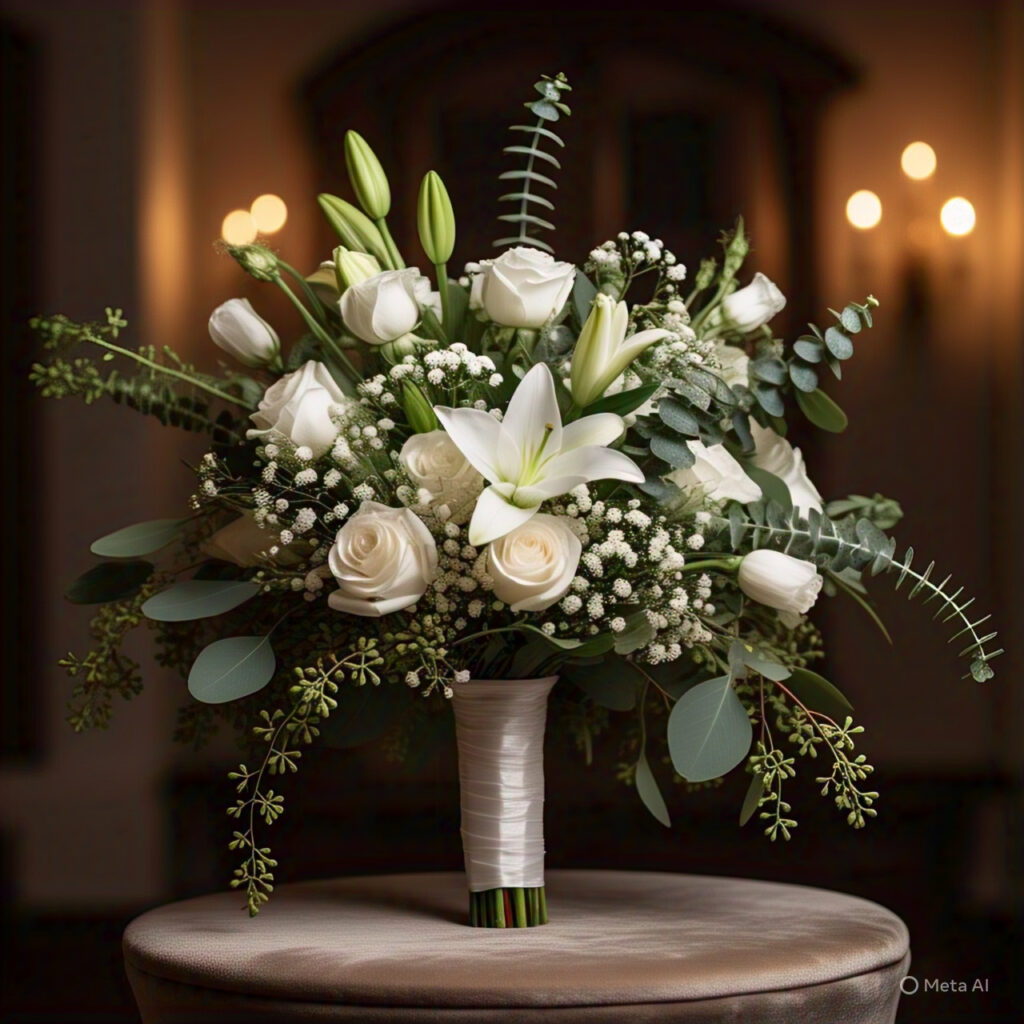
How to Match Your Bouquet to Your Dress & Wedding Theme
The Bridal Bouquets should complement—not compete with—your gown. Here’s how to balance it:
- Ballgown: A cascading or round bouquet balances the drama of a full skirt.
- Sheath/Column Dress: Sleek, simple bouquets like calla lilies or orchids look modern and sophisticated.
- Boho Dresses: Wildflowers or hand-tied bouquets suit flowy, relaxed silhouettes.
- Vintage Lace Gowns: Use old-fashioned flowers like garden roses or peonies in muted tones.
And don’t forget about color coordination. Match bouquet shades with bridesmaid dresses, floral arrangements, or the groom’s boutonniere for a unified look.
DIY vs. Professional Florist: What’s Right for You?
DIY Pros
- Cost-effective
- Highly personalized
- Creative expression
DIY Cons
- Time-consuming
- Risk of wilting
- Stress on the wedding day
Professional Florist Pros
- Expertise in flower handling and color theory
- Reliable sourcing and arrangement
- Stress-free and polished results
Professional Florist Cons
- More expensive
- Less creative control (unless highly collaborative)
Tip: If you’re tight on budget but want a wow-factor bouquet, consider hiring a florist just for the bridal bouquet and DIY the rest.
Bridal Bouquet Preservation Ideas
Your bouquet represents a once-in-a-lifetime memory—so why not preserve it?
- Pressing Flowers: Flatten blooms between parchment paper and frame them.
- Silica Gel Drying: Maintains shape and color well.
- Resin Casting: Turn flowers into coasters, jewelry, or keepsake cubes.
- Bouquet Shadow Boxes: A 3D display that showcases your bouquet, photo, and ribbon.
Preserving your bouquet adds long-lasting beauty to your home and keeps those wedding-day memories tangible.
Sustainable & Eco-Friendly Bridal Bouquets
Conscious brides are choosing ethical flowers. Here’s how:
- Locally Grown: Reduces carbon footprint and supports small farmers.
- Seasonal Blooms: Avoids energy-intensive greenhouse flowers.
- Foam-Free Designs: Traditional floral foam is not biodegradable.
- Donating Flowers: Give your bouquet to nursing homes or shelters after the event.
You can be stunning and sustainable at the same time.
Bridal Bouquets for Different Cultures & Traditions
- Indian Weddings: Jasmine, marigolds, and red roses are prevalent.
- Chinese Weddings: Peonies and orchids symbolize wealth and love.
- Greek Weddings: Olive branches and herbs are used for protection.
- African Weddings: Bold colors, native flowers, and beaded elements.
- Western Christian Weddings: Often follow the “language of flowers” tradition.
Respecting cultural customs through your bouquet adds authenticity and emotional depth to your celebration.
Frequently Asked Questions
Q1: What is the average cost of a bridal bouquet?
A: Bridal bouquets can range from $100–$350, depending on flower type, size, and florist. Custom designs or exotic blooms can cost more.
Q2: How do I choose the right bouquet for my dress?
A: Match the style and scale of your bouquet to your gown’s shape and formality. A cascading bouquet suits dramatic dresses, while a posy fits sleek gowns.
Q3: What are the best flowers for a summer bridal bouquet?
A: Peonies, zinnias, sunflowers, and roses thrive in summer. Choose bold, vibrant colors to complement the season.
Q4: Can I preserve my bridal bouquet?
A: Yes! Options include pressing, silica drying, resin casting, and creating bouquet shadow boxes for lasting memories.
Q5: Should I DIY my bouquet or hire a florist?
A: DIY offers savings and personalization, but can be stressful. Hiring a florist ensures professional quality and reduces wedding day anxiety.
Conclusion: A Bridal Bouquet Is a Story in Bloom
When all is said and done—when the vows have been spoken, the confetti tossed, and the photographs taken—the bridal bouquet remains one of the most evocative symbols of the wedding day. It is not merely a floral arrangement; it is a story wrapped in petals, color, fragrance, and feeling. It speaks of love, heritage, personality, and the future that awaits. For many brides, choosing the perfect bridal bouquet is as emotionally charged and personally significant as choosing the dress itself.
Throughout this guide, we have explored the many facets that make bridal bouquets such a central piece of the wedding celebration. From their deep historical and cultural roots to their symbolic meanings, the bridal bouquet has evolved into an art form. Every flower has a voice—roses whisper of romance, peonies echo prosperity, orchids sing of elegance—and the bouquet brings these voices together in harmony.
Whether you lean toward classic styles like the round or cascading bouquet, or you’re drawn to modern innovations such as hoop or crescent designs, your bouquet should be a true extension of your individuality. It is your chance to create something intimate and expressive that aligns with your wedding vision, your dress, your theme, and your soul. The shape, structure, and floral choices should be made with intention, whether to complement a bohemian elopement in the woods or a grand ballroom celebration under crystal chandeliers.
One of the most empowering aspects of today’s bridal bouquet culture is the creative freedom it offers. Want to include succulents for a modern twist? Prefer wildflowers that reflect your free spirit? Longing to wrap the stems in a piece of your mother’s wedding veil? All of these choices make your bouquet a deeply personal keepsake. No longer confined to tradition, brides today are encouraged to make their bouquet a reflection of who they are and what they value.
Moreover, we’ve touched on the importance of seasonality and sustainability—two crucial elements for the mindful modern bride. Choosing locally-sourced and in-season blooms not only supports your local community and environment, but it also ensures that your bouquet is at its freshest and most vibrant on your big day. Adding eco-conscious choices such as foam-free structures and biodegradable materials proves that sustainability and style can coexist beautifully.
Even after the ceremony is over, your bouquet’s journey doesn’t have to end. From pressing your flowers into art to drying and preserving them in resin or shadow boxes, there are many ways to hold on to that special piece of your wedding. These preservation options give your bridal bouquet a second life as a keepsake and a daily reminder of one of the happiest days of your life.
Whether you choose to work with a professional florist or go the DIY route, what matters most is that your bridal bouquet resonates with your love story. It should evoke emotion when you look at it in your photos decades later. It should remind you of the butterflies you felt walking down the aisle, the joy in your partner’s eyes, and the vows you made beneath the arch of flowers.
In the end, a bridal bouquet isn’t just a cluster of beautiful blooms. It is a piece of you—a blend of dreams, traditions, and aspirations. It marks the start of a new chapter and captures the spirit of a moment you’ll never forget. So choose wisely, dream boldly, and above all, let your bridal bouquet bloom with love.

